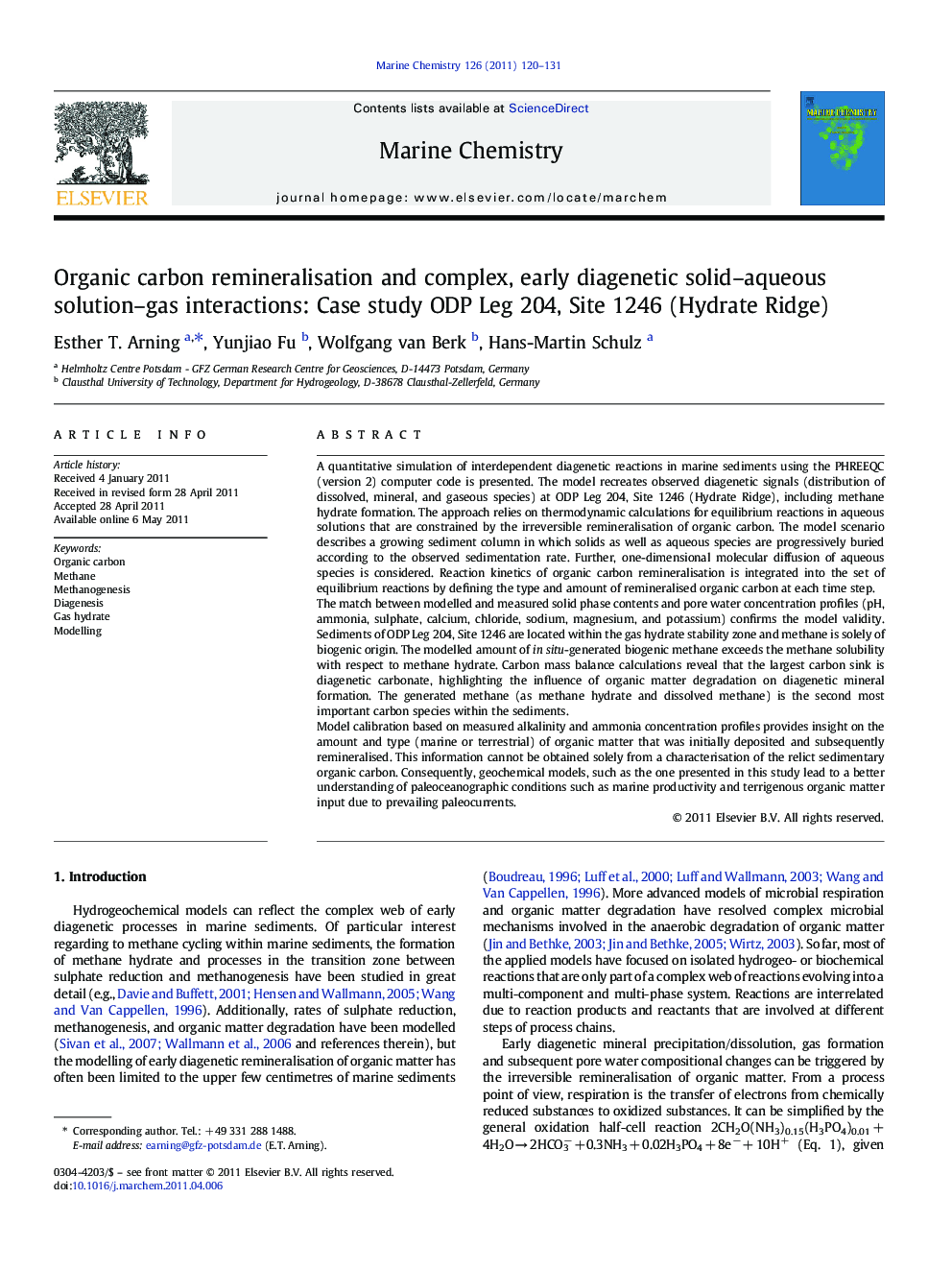| کد مقاله | کد نشریه | سال انتشار | مقاله انگلیسی | نسخه تمام متن |
|---|---|---|---|---|
| 1261977 | 1496698 | 2011 | 12 صفحه PDF | دانلود رایگان |

A quantitative simulation of interdependent diagenetic reactions in marine sediments using the PHREEQC (version 2) computer code is presented. The model recreates observed diagenetic signals (distribution of dissolved, mineral, and gaseous species) at ODP Leg 204, Site 1246 (Hydrate Ridge), including methane hydrate formation. The approach relies on thermodynamic calculations for equilibrium reactions in aqueous solutions that are constrained by the irreversible remineralisation of organic carbon. The model scenario describes a growing sediment column in which solids as well as aqueous species are progressively buried according to the observed sedimentation rate. Further, one-dimensional molecular diffusion of aqueous species is considered. Reaction kinetics of organic carbon remineralisation is integrated into the set of equilibrium reactions by defining the type and amount of remineralised organic carbon at each time step.The match between modelled and measured solid phase contents and pore water concentration profiles (pH, ammonia, sulphate, calcium, chloride, sodium, magnesium, and potassium) confirms the model validity. Sediments of ODP Leg 204, Site 1246 are located within the gas hydrate stability zone and methane is solely of biogenic origin. The modelled amount of in situ-generated biogenic methane exceeds the methane solubility with respect to methane hydrate. Carbon mass balance calculations reveal that the largest carbon sink is diagenetic carbonate, highlighting the influence of organic matter degradation on diagenetic mineral formation. The generated methane (as methane hydrate and dissolved methane) is the second most important carbon species within the sediments.Model calibration based on measured alkalinity and ammonia concentration profiles provides insight on the amount and type (marine or terrestrial) of organic matter that was initially deposited and subsequently remineralised. This information cannot be obtained solely from a characterisation of the relict sedimentary organic carbon. Consequently, geochemical models, such as the one presented in this study lead to a better understanding of paleoceanographic conditions such as marine productivity and terrigenous organic matter input due to prevailing paleocurrents.
Research Highlights
► Our model is a quantitative simulation of coupled diagenetic reactions in marine sediments.
► The model reproduces observed diagenetic signals within pore waters and sediments.
► Carbon mass balance calculations show that generated methane is an important carbon pool within the sediments.
► The oxidation of organic carbon is the key factor in biogenic methane production.
Journal: Marine Chemistry - Volume 126, Issues 1–4, 20 September 2011, Pages 120–131